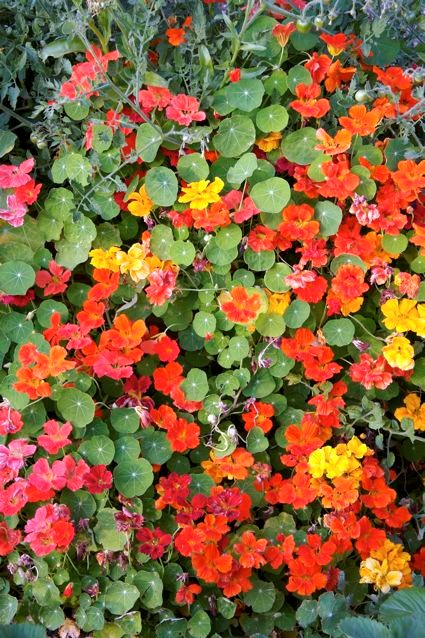Tip of the Week: Plant a lot of Love in your Garden
Have you got companion plants in your garden? If not, you might want to consider it. Many plants thrive on being planted close to one another. Take tomatoes and basil, for example. They’re a marriage made in heaven even before they get to the kitchen.

Basil improves the growth and flavor of tomatoes and will also repel thrips, a common Colorado garden pest. Add more typical Italian herbs to the mix by planting parsley, oregano and thyme and you will enhance the winning garden combo. Oregano is a flavorful herb that provides overall pest protection throughout the garden.
Other companion plants will bring in good insects for the benefit of the whole garden, while still others drive the bad bugs away. All you need to know is who loves who in the plant world.
Add these flowering plants – they do more than look pretty
- Alyssum – Plant it alongside potatoes and broccoli. It attracts delicate beneficial insects, such as predatory wasps and attracts hoverflies whose larvae devour aphids.
- Chrysanthemum – used as botanical pesticides for centuries. White flowering chrysanthemums repel Japanese beetles.
- Lavender – attracts butterflies and bees and repels fleas, whitefly and moths.
- Marigolds – a pest deterrent. They keep soil free of bad nematodes, beetles and whiteflies and discourage many other insects. Plant freely throughout the garden but avoid bean and cabbage plants. Marigolds must be a scented variety for them to work. They can attract spider mites and slugs.
- Nasturtium – Great companion to radishes, cucumber, cabbage, cauliflower, broccoli and mustards. It deters aphids, squash bugs and striped pumpkin beetles and improves growth and flavor. Since it likes poor soil with low moisture and no fertilizer, set potted nasturtiums among garden beds. Its leaves, flowers and seeds are all edible and great in salads.
- Zinnias – Attract hummingbirds which eat whiteflies. Pastel varieties can be used as a trap crop for Japanese beetles. All zinnias attract bees and other insect pollinators.
Herbs and other flavorful plants are also good companions
- Catnip – Deters flea beetles, aphids, Japanese beetles, squash bugs, ants and weevils. It also helps to repel mice.
- Chamomile, peppermint, dill, sage and rosemary – Plant them with broccoli, cauliflower and cabbage. Chamomile is also a host to hoverflies and wasps.
- Chives – Improve growth and flavor of carrots and tomatoes and work well with carrots, broccoli, cabbage and mustard. Chives repel aphids from tomatoes and grapes. Avoid planting near beans and peas.
- Cilantro (coriander) – Repels aphids, spider mites and potato beetle.
- Dill – Plant with cucumbers to attract beneficial predators. Repels aphids, spider mites and squash bug. Dill improves growth of cabbage and lettuce. Do not plant near carrots, caraway, cauliflower, corn, potato or tomatoes.
- Garlic – Plant with beets for flavor and pest control. Plant near roses to repel aphids. It also benefits cukes, peas, lettuce and celery. Garlic accumulates sulfur, a naturally occurring fungicide which will help prevent disease.
- Onions (Alliums) – Plant with carrot, chamomile, beets, strawberries, broccoli, dill, lettuce, summer savory and tomatoes. Onions planted with strawberries help the berries fight disease. Keep onions away from peas and asparagus.
- Sage – Plant with broccoli, cauliflower, rosemary, cabbage, and carrots. It deters cabbage moths, beetles, black flea beetles and carrot flies. Do not plant near cucumbers or onions. Allow sage to flower so it will attract many beneficial insects.
- Tarragon – Plant throughout the garden as few pests like it. It also enhances growth and flavor of vegetables.



